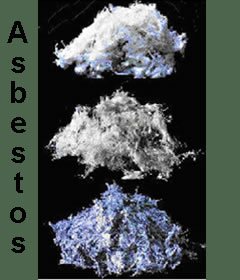

Causes of Mesothelioma
Several causes and factors involved in the development of mesothelioma. However, in general, asbestos is still the main cause of mesothelioma.
In very rare cases, a simian vacuolating virus (SV40) may act as a carcinogenic agent and potentiate asbestos in the development of malignant mesothelioma. The SV40 is a highly controversial virus due to the contamination of vaccines against polio between 1955 and 1963. Millions of people in the United States reported being exposed to the virus. However, there is no clear evidence yet whether SV40 is responsible for certain mesothelioma.
carcinogenic agent and potentiate asbestos in the development of malignant mesothelioma. The SV40 is a highly controversial virus due to the contamination of vaccines against polio between 1955 and 1963. Millions of people in the United States reported being exposed to the virus. However, there is no clear evidence yet whether SV40 is responsible for certain mesothelioma.
Exposure to erionate, a type of mineral zeolite which has properties similar to asbestos, is suggested to be one of the causes of mesothelioma in some villages in Turkey.
Radiation using thorium oxide (Thorotrast) has been reported to increase the risk of developing pleural and peritoneal mesothelioma among some people.
Smoking only is not considered to affect the development of mesothelioma, but, when smoking is associated with asbestos, the risk of mesothelioma increases significantly.
For many decades, asbestos is the major cause of developing mesothelioma and a certain number of lung diseases. Inhalation of particles is the most common way of entry, which explains why most cases of mesothelioma occur among people working in the asbestos industry.Since 1940, millions of American workers have been exposed to asbestos dust. In a review of occupationally related mesothelioma cases, the median latency ( the time from first exposure to manifestation of disease ) was 32 years.
For who wants to have a clear idea about asbestos. Well, asbestos is the name given to a certain family of minerals that take place in fibrous form. These fibers can be transformed into a variety of materials that are particularly resistant to fire, heat and corrosion. Asbestos can be spun and woven into textiles, tangled in the insulating material, or with other substances used to make many products, including brake linings, clutch plates, and roofs and floor coverings . Because of these, asbestos is almost irreplaceable as no other substance provides its desirable properties.
the name given to a certain family of minerals that take place in fibrous form. These fibers can be transformed into a variety of materials that are particularly resistant to fire, heat and corrosion. Asbestos can be spun and woven into textiles, tangled in the insulating material, or with other substances used to make many products, including brake linings, clutch plates, and roofs and floor coverings . Because of these, asbestos is almost irreplaceable as no other substance provides its desirable properties.
However, manufacturers are developing substitute materials because of questions surrounding the production of asbestos products. Inhalation of asbestos fibers over a period as little as one to two months has been linked to lung cancer, lung-cavity lining or mesothelioma, asbestosis, and severe pulmonary insufficiency.
There are two general varieties of asbestos: serpentine and amphibole.
Chrysotile, obtained from serpentine rocks, is the form most abundant and is widely made from the accounting of asbestos for 90% of the asbestos used in the production of new materials.
Amphiboles are long and thin fibers that are more powerful for causing lung cancer and related diseases. Amphiboles include amosite (brown asbestos), crocidolite (blue asbestos), tremolite, anthophyllite and actinolite. Among these, crocidolite is the strongest carcinogen that is due to its stem-like appearance that allows the fiber to penetrate easily into the lungs and pleura. They can cause irritation and inflammation of the mesothelium in the long term affect cellular structures leading to cancer. Asbestos can also cause the production of free radicals that damage cells that promote the growth of potentiated cancer. It was suggested that certain fibers may be spewed and swallowed in the gastrointestinal tract. In this way, asbestos can cause peritoneal (abdominal) mesothelioma.
People who work with asbestos have the most risk of contracting mesothelioma. But the family members of these workers may also incur diseases caused by particles that can be performed and the worker's clothes and hair. Aside from that, those who reside in a room with products built using asbestos are subject to inhale particles without knowing it. Houses and structure built in 1800 to the mid-1900s are more likely to use materials such as asbestos was widely used commercially during this period. The latency period of mesothelioma can take between 20 to 50 years after exposure to asbestos.
Mesothelioma needs to be diagnosed with the aid of the medical history of a person and adiologic studies such as X-rays, CT scans, MRI and PET. But since mesothelioma can emulate many lung diseases, there may be a need for chest thoracostomy, pericardiocentesis, and paracentesis, depending on the location of the tumor. A biopsy confirms the diagnosis of mesothelioma. Unfortunately, most cases of mesothelioma are diagnosed when it is already at its advanced stage. Treatment options vary depending on the stage and extent of metastases. Additional surgery to radiation and chemotherapy are the best options available. In advanced stages the treatment is difficult, where palliative (supportive) care is given to treat the symptoms. However, the disease itself is still there.
Despite the numerous dangers of the use of asbestos, many people are still exposed to asbestos in particular in countries like India, China and Russia. The Environmental Protection Agency (EPA) estimated that 3,000 to 12,000 cases of cancer, usually fatal, are caused each year in the United States by exposure to asbestos. But the controversies continue to surround the issue of asbestos as a health hazard. Thousands of related diseases and fatalities have been documented, yet some countries have not placed any prohibition on asbestos products.